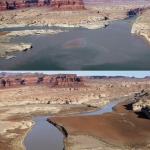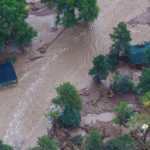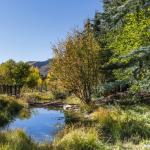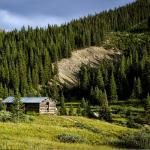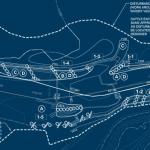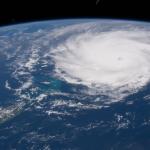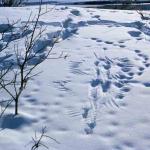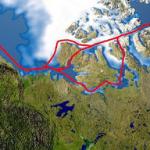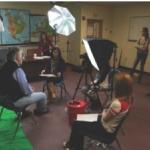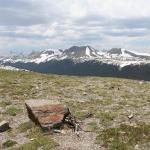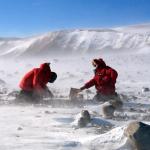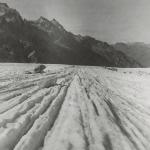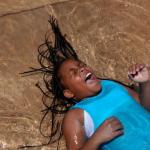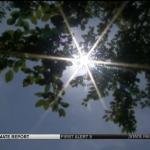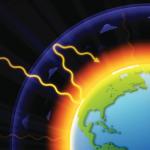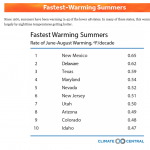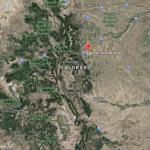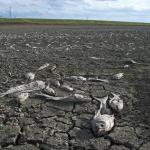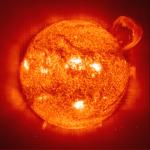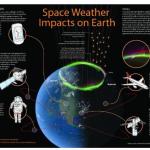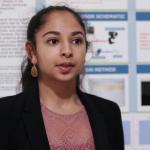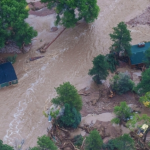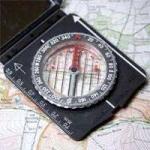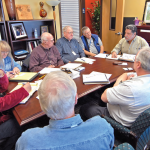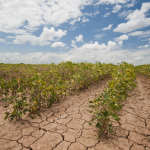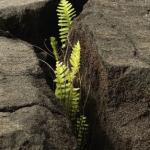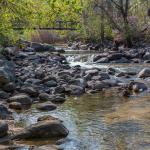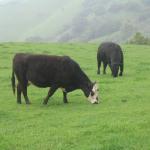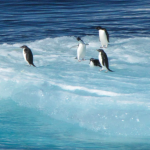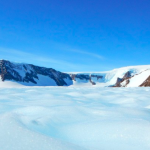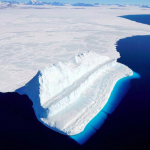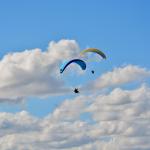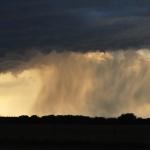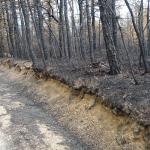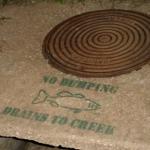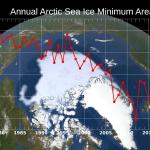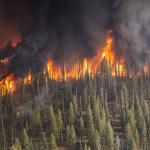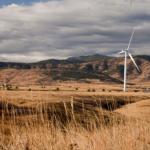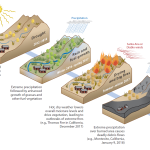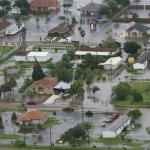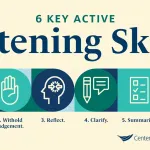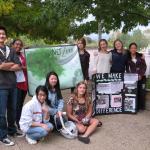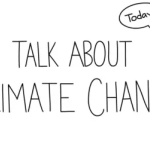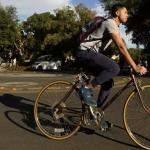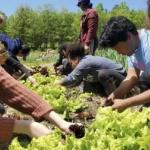Lesson Plans & Activities
Colorado Drought (Middle School)
This lesson is best taught at the beginning of a HEART Force unit, but it can also act as a stand-alone lesson to introduce students to drought in Colorado.
Students build an understanding of drought in Colorado using multiple data sources in a jigsaw activity.Lesson
Colorado-Based
Middle School

The Vocabulary of Hazards
We suggest teaching this lesson to introduce the unit as it will benefit students in their understanding of natural hazards throughout the entire HEART Force Unit.
This lesson uses a matching game to build students' understanding and familiarity with different terms used in the world of resiliency planning.
Lesson
Colorado-Based
Middle School
High School

Envisioning a Resilient Future
We suggest teaching this lesson to introduce the HEART Force Unit.
In this lesson, students create a vision for the future of their community and identify what resources are most important to them as a starting point for resilience planning.
Lesson
Colorado-Based
Middle School
High School

Colorado Flood (Middle School)
This lesson is best taught at the beginning of a HEART Force unit, but it can also act as a stand-alone lesson to introduce students to floods in Colorado.
Students build an understanding of flooding in Colorado using multiple data sources in a jigsaw format.Lesson
Colorado-Based
Middle School

Colorado Wildfire (Middle School)
This lesson is best used as part of the HEART Force curricular unit, but it can also act as a stand-alone lesson to introduce students to wildfire in Colorado.
Students build an understanding of wildfire in Colorado using multiple data sources in a jigsaw format.Lesson
Colorado-Based
Middle School

Flood Resilience in Colorado StoryMap
This is a lesson that can be used to get ideas and prepare for the Community Resilience Expo.
Students interact with a flood StoryMap to explore the Colorado Resiliency Framework.Lesson
Colorado-Based
Middle School
High School

Wildfire Resilience in Colorado StoryMap
This is a lesson that can be used to get ideas and prepare for the Community Resilience Expo.
Students interact with a wildfire StoryMap to explore the Colorado Resiliency Framework.Lesson
Colorado-Based
Middle School
High School

Exploring Local Hazard Mitigation Plans
This lesson is part of the Community Resilience Expo, a culminating event for the HEART Force curriculum unit, where students will share what they’ve learned during the hazard lesson and the role-playing game.
In this lesson, students will explore their county Hazard Mitigation Plan to gain understanding about the hazard in their area (flooding, wildfire, or drought), including historic hazards, probability of future occurrences of the hazard, and vulnerability of the area to the hazard.Lesson
Colorado-Based
Middle School
High School

Geomagnetism in the MESA Classroom: An Essential Science for Modern Society
This is a four-part after-school module designed to suit the interest and abilities of your students and can be modified to fit the time you have available.
Students explore geomagnetism with compasses, navigation exercises, and a geo-caching activity and explore aurora and space weather, with an optional field trip to the National Oceanic and Atmospheric Administration.Lesson
Middle School

Animal Tracks Can Illuminate Many Things: A Detective Exercise
Project EXTREMES lessons were written to be stand alone lessons but can be incorporated into a larger unit.
Having students follow animal tracks (even just people, dogs, or squirrels) and investigating how tracks are made is a fun and exciting way to develop critical thinking, measurement, and graphing skills.Lesson
Middle School

Northwest Passage: Then and Now
Project EXTREMES lessons were written to be stand alone lessons but can be incorporated into a larger unit.
In this lesson, students learn about some of the early explorations of the Northwest Passage, and how the changing sea ice extent has prompted new explorations of this region to transport goods from one region of the Northern Hemisphere to another.
Lesson
Middle School

Ice Core Demonstration: The Past is the Key to the Future
Project EXTREMES lessons were written to be stand alone lessons but can be incorporated into a larger unit.
This lesson has students explore how the gases trapped in ice cores over the last quarter of a century can be used to understand how Earth's atmosphere has changed in the past.
Lesson
Polar Science
Middle School

Filmmaking: Pre-Production
This is the first part of a 3-part unit on the filmmaking process for both formal and informal education settings.
This lesson has students explore science content, decide on the topic for their film, and do all the preparatory work before filming begins.Lesson
Filmmaking
Middle School
High School
Informal Audience

Filmmaking: Production
This is the second part of a 3-part unit on the filmmaking process for both formal and informal education settings.
In this lesson, students film interviews with content experts as well as additional B-roll footage, and film mentors help students find existing footage and media to supplement their films.Lesson
Filmmaking
Middle School
High School
Informal Audience

Filmmaking: Post-production
This is the third part of a 3-part unit on the filmmaking process for both formal and informal education settings.
This lesson teaches students about editing films and respecting licensed materials, while also ensuring they receive the support they need to ensure completion of their films.Lesson
Filmmaking
Middle School
High School
Informal Audience

Exploring the Arctic
This is the first activity of a three-part curriculum about Arctic climate; the activities may be used independently or in sequence.
This activity introduces students to the Arctic and Arctic climate. Through a virtual exploration of the geography of the Arctic students become familiar with the region. They are then introduced to meteorological parameters that Arctic research teams use.Lesson
Polar Science
High School
University/College
Do you really want to visit the Arctic?
This is the second activity of a three-part curriculum about Arctic climate; the activities may be used independently or in sequence.
This jigsaw activity introduces students with Arctic weather data using a role-playing activity that has students read and interpret graphs while considering the optimal time to plan a research mission to the Arctic.Lesson
Polar Science
High School
University/College
Exploring Arctic Climate Data
This is the third activity of a three-part curriculum about Arctic climate; the activities may be used independently or in sequence.
In this final activity, students use authentic Arctic climate data to explore albedo and its relationship to seasonal snowmelt as a self-reinforcing feedback mechanism, which is then applied to large scale global climate change.Lesson
Polar Science
High School
University/College
What’s Up With The Rising Temperatures in Colorado Cities?
This is the first lesson in the Climate Resiliency Education Middle School Climate Unit.
This lesson introduces why certain cities in Colorado are getting hotter using a video by the Denver Post that describes the pattern.
Lesson
Colorado-Based
Middle School
What Makes Cities Hotter?
This is the second lesson in the Climate Resiliency Education Middle School Climate Unit.
In this lesson, students explore reasons why temperatures in particular Colorado cities are rising.Lesson
Colorado-Based
Middle School
Why Are Growing Cities Hotter?
This is the third lesson in the Climate Resiliency Education Middle School Climate Unit.
This lesson has students explore what land use changes are happening and how changes in surface color affects temperatures in cities.
Lesson
Middle School
Are Other Parts of the World Getting Hotter?
This is the fourth lesson in the Climate Resiliency Education Middle School Climate Unit.
In this lesson, students investigate whether other parts of the world are changing and getting hotter just like Colorado.
Lesson
Middle School
What Was Earth’s Temperature Like in the Past?
This is the fifth lesson in the Climate Resiliency Education Middle School Climate Unit.
Students examine what the world’s temperature trend was in the past and whether temperatures have changed recently.
Lesson
Middle School
How Does Human Activity Affect the Warming Temperatures on Earth?
This is the sixth lesson in the Climate Resiliency Education Middle School Climate Unit.
This lesson explores whether human activities release greenhouse gases, like CO2, and whether these activities can cause temperatures on Earth to increase.
Lesson
Middle School
How Do Cars Impact CO2 in the Atmosphere?
This is the seventh lesson in the Climate Resiliency Education Middle School Climate Unit.
During this lesson, students explore how fossil fuel burning in cars contributes CO2 to the atmosphere.
Lesson
Middle School
How Does an Increase in CO2 Cause an Increase in Temperature?
This is the eighth and final lesson in the Climate Resiliency Education Middle School Climate Unit.
In this lesson, students learn how more CO2 in the atmosphere causes global warming.Lesson
Middle School
Why Are Cities Getting Hotter?
This is the first lesson in the Climate Resiliency Education High School Climate Unit.
During this lesson, students explore the increase in summer temperatures and describe the pattern as it relates to Colorado using a video by the Denver Post.
Lesson
Colorado-Based
High School
What is Special About Cities Compared to Rural Places?
This is the second lesson in the Climate Resiliency Education High School Climate Unit.
This lesson explores climate data at local, national, and global levels to determine that temperatures are changing all over the world, and that there are certain locations where temperatures are warming faster than the global average.
Lesson
High School
Why Are Cities and Other Regions of the World Getting Hotter?
This is the third lesson in the Climate Resiliency Education High School Climate Unit.
This lesson has students investigate how albedo is contributing to temperature increasing in some places, like cities, are increasing at faster rates than elsewhere.
Lesson
High School
How Do Humans Contribute to the Increase in Global Temperatures?
This is the fourth lesson in the Climate Resiliency Education High School Climate Unit.
Students explore the greenhouse effect in this lesson using a computer simulation and develop a model for how it works.
Lesson
High School
Is it Normal That World Temperatures Are Rising This Fast?
This is the fifth lesson in the Climate Resiliency Education High School Climate Unit.
This lesson explores if it is normal that world temperatures are rising at the currently observed fast pace.
Lesson
High School
What Impact do Increasing Greenhouse Gases Have?
This is the sixth and final lesson in the Climate Resiliency Education High School Climate Unit.
In this lesson, students utilize case studies to learn about the ways climate change is currently impacting people and other living things around the world.
Lesson
High School
What Are The Features of The Sun?
This is the first of four modules/lessons in the SDO curriculum that leads students through an interactive exploration of Solar Science.
In this lesson, students develop a fundamental understanding of NASA’s Solar Dynamic Observatory (SDO) and the Sun’s structure and function.Lesson
Middle School

Why Do We Study the Sun?
This is the second of four lessons in the SDO curriculum that leads students through an interactive exploration of Solar Science.
Students develop a basic understanding of how and why scientists study the electromagnetic spectrum and magnetic fields of the Sun to gain a greater understanding of solar activity and space weather.Lesson
Middle School

How Does The Sun Affect the Earth?
This is the third of four lessons in the SDO curriculum that leads students through an interactive exploration of Solar Science.
This lesson has students create a hands-on model that accurately explains seasonal changes on Earth and develop knowledge of the Sun-Earth system.Lesson
Middle School

SDO Exploration Museum
This is the fourth and final lesson in the SDO curriculum that leads students through an interactive exploration of Solar Science.
In the final lesson of the SDO curriculum, student teams collaborate to design and present their three Solar Module activities as part of their 3-D Solar Exhibit summative assessment.Lesson
Middle School

Colorado Flood (High School)
This lesson is best taught at the beginning of a HEART Force unit, but it can also act as a stand-alone lesson to introduce students to floods in Colorado.
The way we choose to design our communities has impacted community risk and vulnerability to flooding; in this lesson, students will explore this concept by analyzing environmental data to classify patterns and practice communicating their findings.Lesson
Colorado-Based
High School

Colorado Wildfire (High School)
This lesson is best used as part of the HEART Force curricular unit, but it can also act as a stand-alone lesson to introduce students to wildfire in Colorado.
Students build an understanding of wildfire in Colorado using multiple data sources in a jigsaw format.Lesson
Colorado-Based
High School

Creating a Compass from a Magnet
Project EXTREMES lessons were intended to stand alone, but this lesson can be included in a unit on the Earth’s interior.
In this lesson, students create a compass and apply their reasoning about magnetism to how compasses work to help us navigate around the globe while utilizing the Earth’s magnetic field.
Lesson
Nature of science
Elementary School
Middle School

Communicate Existing Plans
This is a guide that can be used for a pathway for the Community Resilience Expo.
In this sub-unit, students will learn more about their community’s resilience plans, choose a specific topic to focus on, and develop a product to communicate the plan to their peers and/or their community.Lesson
Colorado-Based
Middle School
High School

Colorado Drought (High School)
This lesson is best taught at the beginning of a HEART Force unit, but it can also act as a stand-alone lesson to introduce students to drought in Colorado.
Humans have been affected by severe drought throughout history; in this lesson students explore this concept by analyzing environmental data to classify patterns and practice communicating their findings.Lesson
Colorado-Based
High School

Science or Pseudoscience?
Project EXTREMES lessons were written to be stand alone lessons but can be incorporated into a larger unit.
This lesson introduces students to the nature of science and how to evaluate evidence to determine whether they are engaging in science or pseudoscience.
Lesson
Nature of science
Middle School

Photosynthesis, Respiration, and the Short-Term Carbon Cycle
Project EXTREMES lessons were written to be stand alone lessons but can be incorporated into a larger unit.
This lesson is focused on the short-term cycling of carbon and is designed to put the processes of photosynthesis and respiration within a global perspective.
Lesson
Middle School

Habitat for Stream Insects
Project EXTREMES lessons were written to be stand alone lessons but can be incorporated into a larger unit.
This activity encourages students to collect data to answer questions, explore the roles of individual macroinvertebrates in aquatic ecosystems, and think about the health of aquatic ecosystems relative to the macroinvertebrates found.Lesson
Middle School

In Support of Basic Science
Project EXTREMES lessons were intended to stand alone, and this lesson can be implemented at any time when deemed appropriate, such as the onset of a scientific investigation.
This activity will challenge students thinking about the nature of science and highlight the importance of both basic and applied scientific research.
Lesson
Nature of science
Middle School

Energy Pyramids and Food Webs
Project EXTREMES lessons were written to be stand alone lessons but can be incorporated into a larger unit.
In this lesson, students identify the sun as the source of energy and understand how energy flows through an ecosystem.
Lesson
Middle School

What do we already know, or think we know, about climate & Antarctica?
This is the first lesson of a five-part curriculum about Antarctic physical environments and ecosystems.
In this lesson, students will elicit initial ideas about climate, explore images of Antarctica, learn important vocabulary, and synthesize how satellite imagery can help us understand climate change in Antarctica.Lesson
Polar Science
High School
How does the changing climate impact the penguins around Antarctica?
This is the second lesson of a five-part curriculum about Antarctic physical environments and ecosystems.
In this lesson, students investigate the life history characteristics of different Antarctic penguin species and identify the changes that their populations have experienced.Lesson
Polar Science
High School
Antarctic Life & Albedo
This is the third lesson of a five-part curriculum about Antarctic physical environments and ecosystems.
In this lesson, students explore the importance of albedo (or reflectivity) to penguins and the surfaces they inhabit and learn how penguin colonies may be mapped using satellites.
Lesson
Polar Science
High School
Why does the ice melt on the “Frozen Continent”?
This is the fourth lesson of a five-part curriculum about Antarctic physical environments and ecosystems.
After exploring albedo in the previous lesson, this lesson expands on more factors that lead to surface ice melt in Antarctica.Lesson
Polar Science
High School
Human Impacts on Climate Change: What will happen and what can we do about it?
This is the fifth lesson of a five-part curriculum about Antarctic physical environments and ecosystems.
In this lesson, students explore how human activities will continue to impact Antarctic ice, discuss human contributions to climate change, and investigate what we can do to stop/reverse these negative effects.
Lesson
Polar Science
High School
Data Analysis: Introduction to Measurement, Error, and Outliers
Project EXTREMES lessons were written to be stand alone lessons but can be incorporated into a larger unit; this lesson can be used to support learners who are new to data collection and analysis.
In this lesson, students measure and compare the rate of a falling object (a penny) at different heights to learn about statistical error.
Lesson
Nature of science
Middle School

Air Quality: More than Meets the Eye
The four DISCOVER-AQ modules can be completed independently, sequentially, or extended into a larger unit of study.
In this module, students engage in a visual demonstration on the causes & effects of air pollutants on air quality and kinesthetic activities on particulate matter & visibility.
Lesson
Middle School

Oh No, O3zone: “Good Up High, Bad Nearby!”
The four DISCOVER-AQ modules can be completed independently, sequentially, or extended into a larger unit of study.
This module teaches students about ozone’s role in the atmosphere and explores authentic data to compare and contrast conditions that affect ground-level ozone values.
Lesson
Middle School

Sherlock NOx: The Mystery of Unnatural Pollution in Natural Places
The four DISCOVER-AQ modules can be completed independently, sequentially, or extended into a larger unit of study.
Students take virtual field trips to explore air quality research sites and investigate the causes, effects, and solutions to nitrogen deposition in Rocky Mountain National Park during this module.
Lesson
Middle School

Carbon Gases CSI: Mobile Lab, Methane & More
The four DISCOVER-AQ modules can be completed independently, sequentially, or extended into a larger unit of study.
During this module, students take a virtual mobile lab drive with scientists to investigate and learn about atmospheric carbon gases, their sources, and impacts on air quality.
Lesson
Middle School

Precipitation Patterns Around the Globe
Project EXTREMES lessons were written to be stand alone lessons but can be incorporated into a larger unit.
Students apply their knowledge of the water cycle to investigate how annual precipitation patterns are related to geography and biology.
Lesson
Elementary School
Middle School

Soil Percolation: Where Does the Rain Go?
Project EXTREMES lessons were written to be stand alone lessons but can be incorporated into a larger unit.
This lesson activity has students conduct an experiment that reinforces one component of the water cycle.
Lesson
Elementary School

Waste, Water, and Wastewater
Project EXTREMES lessons were written to be stand alone lessons but can be incorporated into a larger unit.
In this lesson, students will apply what they know about how to separate a mixture by designing a wastewater treatment facility that effectively removes contaminants.
Lesson
Middle School

Population Estimates: Bringing Math and Science Together
Project EXTREMES lessons were written to be stand alone lessons, but this activity may be used prior to a field study to provide students with practice in estimating or used in a unit on ecosystems.
During this activity students will learn how to estimate population size using two techniques, density extrapolation and the mark-recapture method.
Lesson
Middle School

What Color is the Sun?
The comic book can be used in informal education settings or as introductions to the topics covered the Solar Dynamics Observatory curriculum.
This comic book was developed with the Stanford Solar Center as part of their comic series Tales from Stanford Solar and explores questions like: What color is the Sun? and How do we study the stars?
Lesson
Elementary School
Middle School

Data Puzzle: On a Budget
This data puzzle is a stand-alone lesson that is part of a larger collection of data puzzles.
The Arctic is currently warming at a rate faster than the global average, a phenomenon known as Arctic amplification. In this Data Puzzle, students analyze authentic Arctic datasets to construct explanatory models for the following question, "Why might the Arctic be warming faster than other places on Earth?"Data Puzzle, Lesson
Polar Science
Middle School
High School

Data Puzzle: Balancing Act
This data puzzle is a stand-alone lesson that is part of a larger collection of data puzzles.
Since the early 2000s, the Greenland Ice Sheet’s mass balance has been consistently negative, meaning more mass is being lost than gained. But this change in mass balance hasn’t always happened at the same rate. What could account for observed changes to the amount of ice in the Greenland Ice Sheet in recent decades?Data Puzzle, Lesson
Polar Science
Middle School
High School

Data Puzzle: To Reflect or Not to Reflect
This data puzzle is a stand-alone lesson that is part of a larger collection of data puzzles.
The color of Earth's surface determines how much of the Sun's energy is reflected or absorbed, where lighter-colored surfaces are more reflective (higher albedo). In this Data Puzzle, students analyze authentic Arctic data to construct explanatory models for the following question, "How might the Arctic’s albedo be affected by the observed decline in sea ice?"Data Puzzle, Lesson
Polar Science
Middle School
High School

Data Puzzle: It's All Connected
This data puzzle is a stand-alone lesson that is part of a larger collection of data puzzles.
What makes the Arctic climate system so unique is the sea ice, which influences the Arctic climate in many ways. In this Data Puzzle, students analyze authentic Arctic data to construct explanatory models for the following question, "What effect, if any, do leads (cracks in the sea ice) have on the transfer of moisture between the Arctic Ocean and atmosphere?"Data Puzzle, Lesson
Polar Science
Middle School
High School

Data Puzzle: Megafire - Rare Occurrences or the New Normal?
This data puzzle is a stand-alone lesson that is part of a larger collection of data puzzles.
Megafires have been a hot topic in the news over the past few years, but are they a new phenomenon? In this Data Puzzle, students analyze authentic wildfire data to construct explanatory models for the follow question, "How and why has the number of megafires have changed over time?"Data Puzzle, Lesson
Middle School
High School

Data Puzzle: Megadrought in the Colorado River Basin
This data puzzle is a stand-alone lesson that is part of a larger collection of data puzzles.
Much of the western United States is experiencing drought conditions. In this Data Puzzle, students analyze authentic climate data to construct explanatory models for the following question, "What is causing the megadrought in the Colorado River Basin?"Data Puzzle, Lesson
Middle School
High School

Geomagnetism: Earth's Magnetic Field
In two lessons, designed for grades 6-12, students will explore how Earth’s magnetic field protects us from harmful space weather that can damage communications systems, disrupt navigation systems, and overwhelm the electric grid.Lesson
Middle School

Analyzing Geomagnetism using the CrowdMag App
This lesson is a stand-alone lesson for undergraduate students. Measure the background geomagnetic field of your campus, Identify anomalies created by local magnetic sources, and compare geomagnetic data collected by different devices.Lesson
University/College

Shifting Winds
In this short unit, students investigate the question "Are wind patterns at the foot of the Rocky Mountains changing?" Students explore what causes wind and look at recent wind data. Students create a public-facing infographic to explain to the public if and how wind patterns are changing.Lesson
Colorado-Based
Middle School
Drifting North Polar Planetarium
In this MS/HS lesson, students will be transported to the Arctic with the MOSAiC expedition, The Multidisciplinary drifting Observatory for the Arctic Climate, in an immersive classroom and field trip experience.Lesson
Nature of science, Polar Science
Middle School
High School
ReVisioning Hazards
This is the first lesson in the Lake County Cascading Hazards unit, but can be used for any introduction to natural hazards curriculum.
In the first lesson of the Lake County Cascading Hazards Unit, students read a poem written by a local fire survivor, and utilize a visualization practice to build personal resilience.Lesson
Middle School
High School
Cascading Hazards
This is the second of four lessons in the Lake County Cascading Hazards unit.
In the second lesson of the Lake County Cascading Hazards unit, students dig into local stories and datasets, and learn about the connections between natural hazards.Lesson
Middle School
High School
Take Action
This is the last of four lessons in the Lake County Cascading Hazards unit.
In the last lesson of the Lake County unit, students develop idea to increase resilience to hazards in their own community.Lesson
Middle School
High School
Social Vulnerability to Natural Hazards
This is the third of four lessons in the Lake County Cascading Hazards unit. This lesson can also be used in the HEART Force Curriculum.
In the third lesson of the Lake County Cascading Hazards unit, students learn about social factors that might make one group more vulnerable to a hazard than another.Lesson
Middle School
High School
The Emotions Wheel
This activity is a stand-alone exercise part of seven activities from the Climate Mental Health Support Activities.
Emotion wheels have been a visual tool used by psychologists for decades to help people better understand and interpret their feelings. This activity is for people of all ages and can be done with family members, in a classroom, with friends, work colleagues, etc.Lesson
Elementary School
Middle School
High School
University/College
Informal Audience

Active Listening Skills
This activity is one of seven activities in the Climate Mental Health Support Activities.
In this lesson, students will identify emotions they experience as they learn about the impacts of climate change. In pairs, students will practice active listening skills as one student describes their emotions to the partner who applies active listening skills. They then flip roles and the other student describes their emotions while the partner listens.Lesson
Middle School
High School
University/College

Facilitating Discussions and Creating Solidarity
This activity is one of seven activities in the Climate Mental Health Support Activities.
Talking about emotions related to climate change can help youth to process emotions, move on, and develop trust and connection with others through shared solidarity. In this lesson, students will discuss their thoughts and feelings about climate change with others. Consider teaching the Emotions Wheel and Active Listening activities before this in order to help students develop language and discussion skills.Lesson
Middle School
High School
University/College

Nature Appreciation
This activity is one of seven activities in the Climate Mental Health Support Activities.
In this lesson, students will play, explore, appreciate, and practice perspective-taking in nature. All of these actions help positively connect youth to nature, and instill an ethic of care for the environment.Lesson
Elementary School
Middle School
High School
University/College
Informal Audience

Connecting with Special Places in Nature
This activity is one of seven activities in the Climate Mental Health Support Activities.
In this lesson, students will take time to connect to a place that is special to them.Lesson
Elementary School
Middle School
High School
University/College
Informal Audience

Visioning Possibility
This activity is a standalone exercise that is part of one of seven activities from the Climate Mental Health Support Activities.
In this lesson, students will find inspiration from innovative solutions, envisioning a hopeful future and their role in it.Lesson
Elementary School
Middle School
High School
University/College
Informal Audience

Climate Solutions
This activity is a standalone exercise that is part of one of seven activities from the Climate Mental Health Support Activities.
In this lesson, students will participate in a short scavenger hunt to familiarize themselves with climate change mitigation strategies and solutions for decreasing heat-trapping emissions.Lesson
Elementary School
Middle School
High School
University/College
Informal Audience

You are a Climate Leader
This activity is a stand-alone exercise part of seven activities from the Climate Mental Health Support Activities.
In this lesson, students will read brief biographies of youth climate activists and then reflect on how they can take climate action in their own lives. This lesson is best suited as the end of a unit or lesson on climate change as it requires some background knowledge on the causes of current climate change and potential mitigations or solutions.Lesson
Middle School
High School
University/College
Informal Audience

Module 1: Exploring the Glacier Basin System
This Module consists of five Units, walking students through an overview of the glacier basin system, exploring glacier mass balance, albedo, and surface melt, and looking inside and underneath the glacier. The Units also cover the transition from the glacier margin to land and system responses to climate change.
Earth's polar environments have undergone rapid change during the 21st century and scientists have generated important new data and made groundbreaking insights. Despite growing interest to bring polar-focused material into the undergraduate classroom, curriculum development has lagged. Polar Space and Places, or PolarPASS, is connecting polar-focused material with innovative teaching methods to advance STEM undergraduate education and increase polar knowledge.Lesson
Polar Science
High School
University/College

Module 2: Long-term Spatial Transformations of the Glacier Basin System
Module 2 is designed to follow after Module 1. Instructors may choose to use Module 2 independently, but may want to consider some additional introductory materials if they are not beginning with Module 1. Module 2 consists of four Units. The Units begin by exploring past ice margin retreat and processes of ice margin retreat and elevation change. The material then explores natural climate variability and anthropogenic forcings, and then examines potential future ice margin response to climate change.
Earth's polar environments have undergone rapid change during the 21st century and scientists have generated important new data and made groundbreaking insights. Despite growing interest to bring polar-focused material into the undergraduate classroom, curriculum development has lagged. Polar Space and Places, or PolarPASS, is connecting polar-focused material with innovative teaching methods to advance STEM undergraduate education and increase polar knowledge.Lesson
Polar Science
High School
University/College

